The Rites of Spring
Published July 2022
By David Joshua Jennings | 4 min read
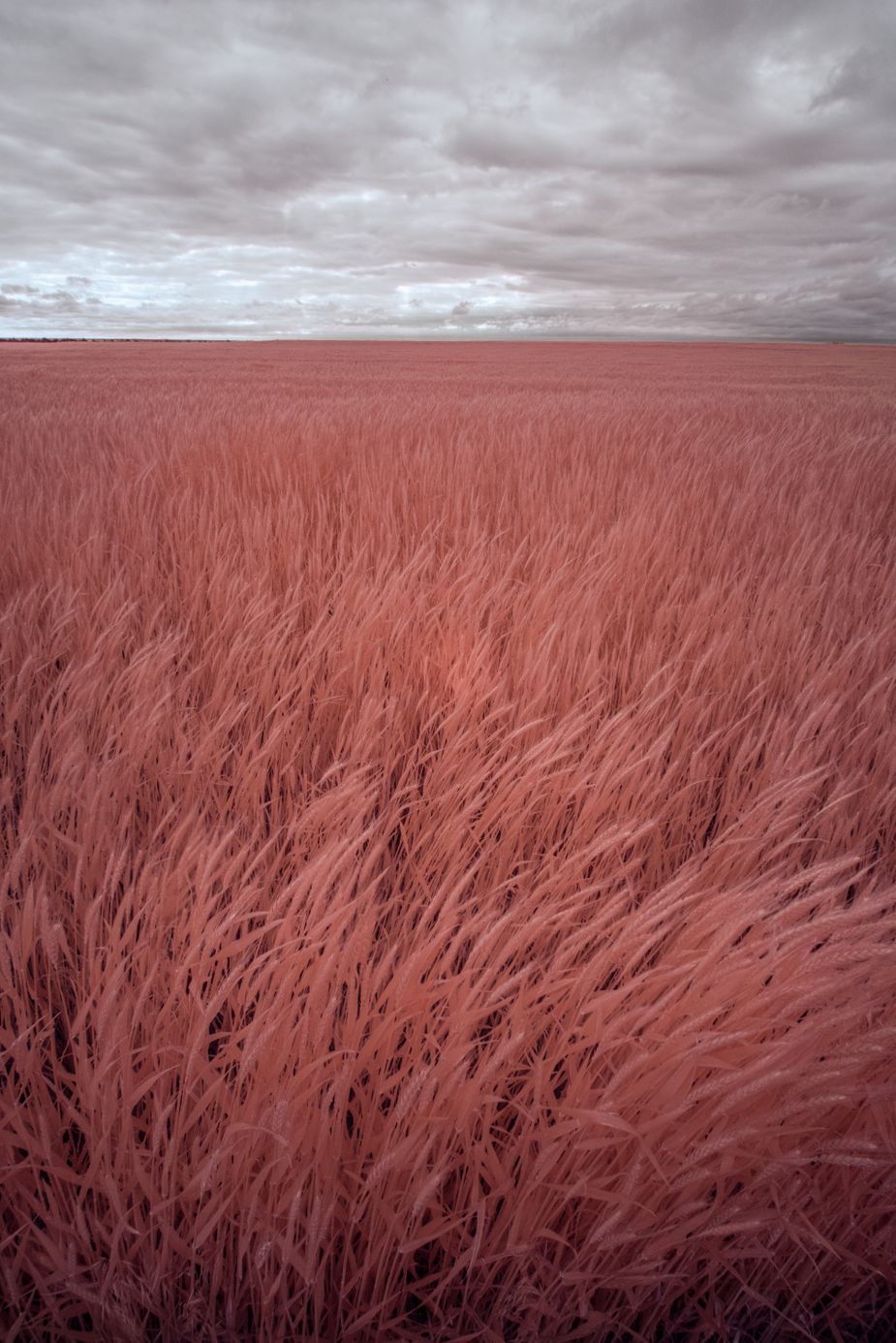
In David Joshua Jennings' photographs taken with an infrared camera, green plants show up in shades of pink and orange. This scene was captured near Geronimo in Comanche County.
What is it each April that sweeps across the Oklahoma landscape, causing the effortless flourishing of spring? I am astonished by the transition every time. From a yellow land of skeletal trees, fresh green seems to pour in from nowhere and everywhere. In spring 2021, I attempted to explore and capture this ineffable phenomenon by going on a road trip through rural Oklahoma with an infrared camera.
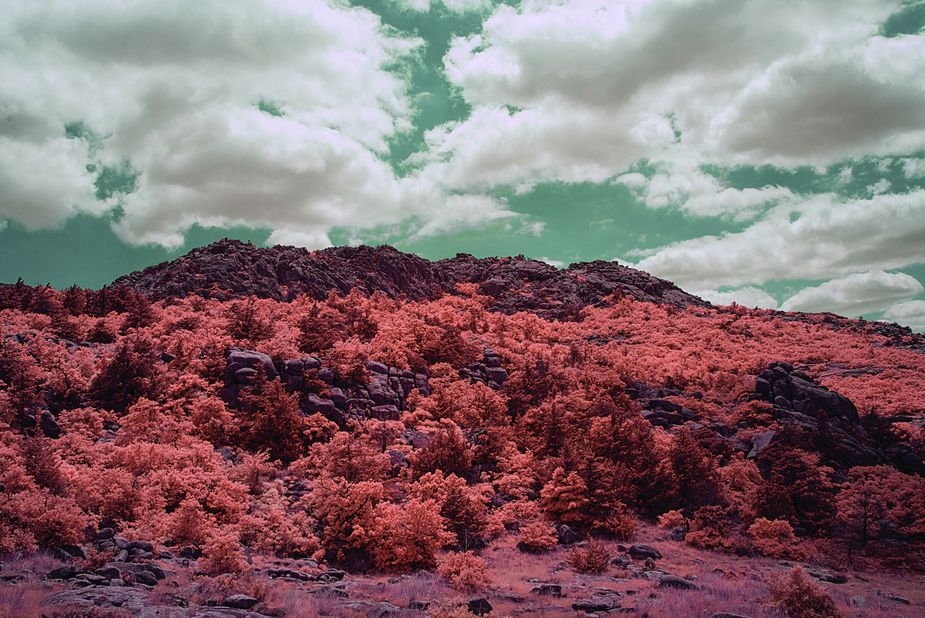
Wichita Mountains Wildlife Refuge near Lawton
Of the world’s many marvels, humans comprehend very little. Our senses are limited. The world we experience is only a fragment of the whole, like the meager reach of a flashlight pointed at a dark sky. We are surrounded by a world we barely perceive. The visual light we can see, which begins in red and ends in violet, is only a small portion of the vast electromagnetic spectrum. Beyond violet are ultraviolet and gamma radiation. Beyond red is infrared, which we usually experience as heat. Both are imperceptible to the human eye, though other creatures have evolved the capacity to see these wavelengths. Bees, for example, can spot ultraviolet patterns on flower petals—patterns that seem to have evolved specifically to attract them. Snakes and blood-sucking insects sense infrared light, which allows them to find prey in the dark.
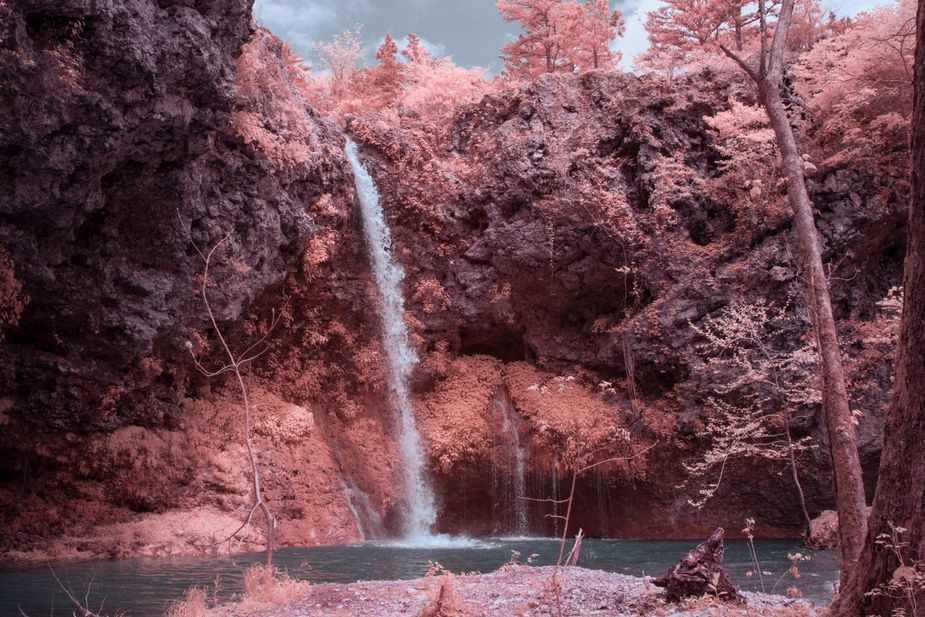
Natural Falls State Park in Colcord
Working with an infrared camera, I hoped to bring some of the invisible-to-us magic of Oklahoma spring into the realm of perception, allowing a deeper meditation on the natural transition we experience every year.

Talimena National Scenic Byway in LeFlore County
Why spring? Closely observe plants, and you’ll notice the variation in the intensity of their greens through the seasons. Leaves, which emerge like vivid verdant handkerchiefs in spring, lose their glow month by month, becoming darker, harder, older, and less reflective until finally, they crisp and drop.
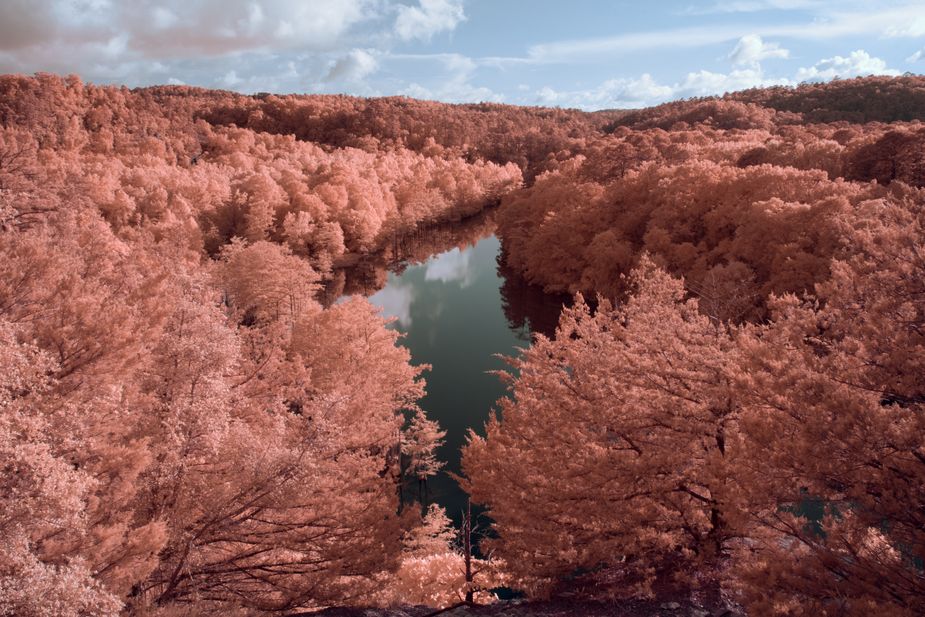
J.T. Nickel Family Nature and Wildlife Preserve near Tahlequah
We see a leaf as green because wavelengths in that region of the visual spectrum are reflected into our eyes by pigments in the leaf. The red and blue light is absorbed to fuel photosynthesis and create chlorophyll. A healthy plant also will reflect, transmit, and absorb portions of the infrared and near-infrared spectrum, which we also cannot see. The more chlorophyll a plant has, the more infrared energy it will reflect. Plants in spring and early summer, when they are at their strongest, reflect the largest amount of this infrared and near-infrared energy.

Medicine Park in Comanche County
This is what you are seeing in these images—that which lies just beyond our perception yet is constantly there, always present with us. For me, these photographs give presence to a world that is unseen yet in which we always are immersed. They tease the question: How much more is there right in front of us, just beyond our reach?
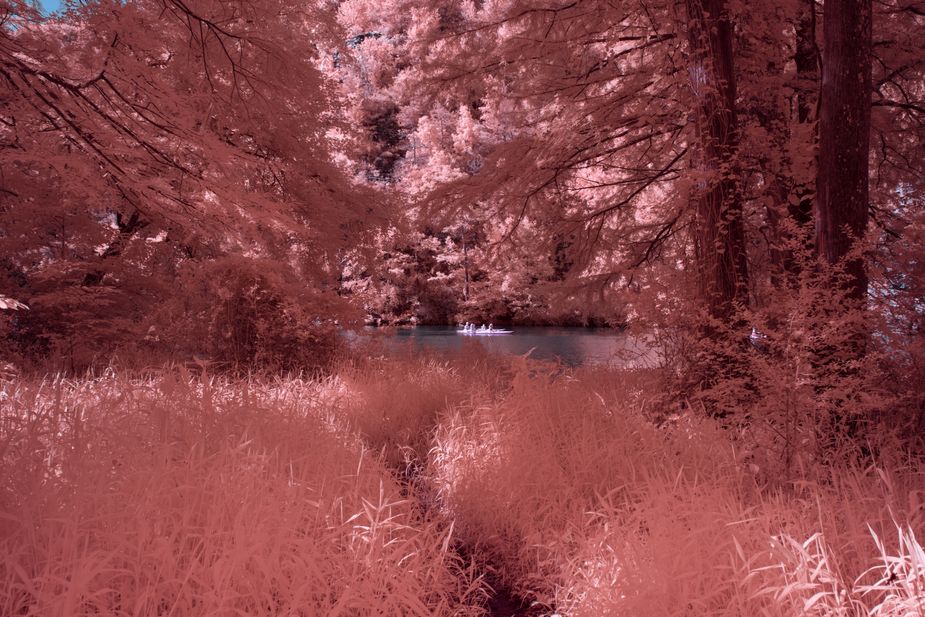
Beavers Bend State Park in Broken Bow







